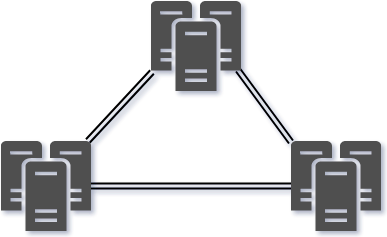OTV: Overlay Transport Virtualization
OTV(Overlay Transport Virtualization) is a technology that provide layer2 extension capabilities between different data centers.
In its most simplest form OTV is a new DCI (Data Center Interconnect) technology that routes MAC-based information by encapsulating traffic in normal IP packets for transit.
- Transparent workload mobility
- Business resiliency
- Superior computing resource efficiencies
| Description | Config | |
|---|---|---|
| Overlay Interface | Logical OTV Tunnel interface | interface Overlay1 |
| OTV Join Interface | The physical link or port-channel that you use to route upstream towards the datacenter interconnect | otv join-interface Ethernet2/1 |
| OTV Control Group | Multicast address used to discover the remote sites in the control plane. | otv control-group 224.100.100.100 |
| OTV Data Group | Used for tunneling multicast traffic over the OTV in the dataplane | otv data-group 232.1.2.0/24 |
| Extend VLANs | VLANs that will be tunneled over OTV. | otv extend-vlan 100 |
| Site VLAN | Used to synchronize the Authoritative Edge Device (AED) role within an OTV site. | otv site-vlan 999 |
| Site Identifier | Should be unique per Datacenter. Used in AED Election. | otv site-identifier 0x1 |
References:
Cisco: NX-OS OTV Configuration Guide
OTV Encapsulation
OTV adds a further 42 bytes on all packets traveling across the overlay network. The OTV Edge device removes the CRC and 802.1Q fields from the original Layer2 frame. It then adds an OTV Shim Header which includes this 802.1Q field (this includes the priority P-bit value) and the Overlay ID information. It also includes an external IP header for the transport network. All OTV packets have Don’t Fragment (DF) bit set to 1 in the external IP header.









